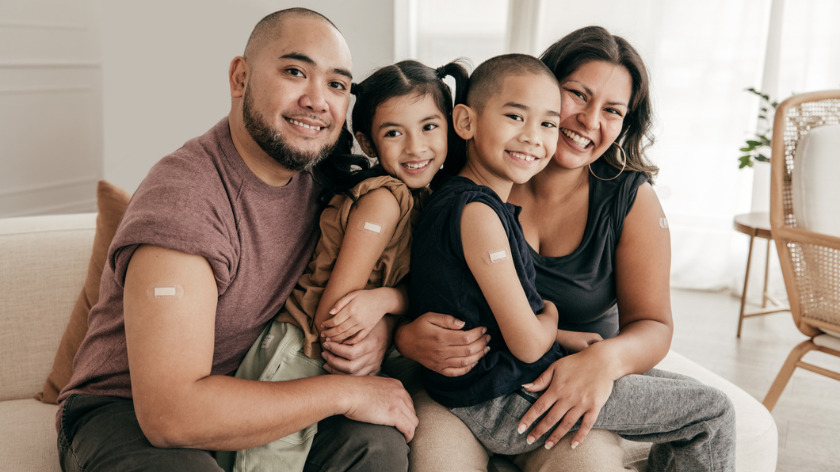Over the last 200 years, vaccines have worked to reduce a substantial amount of human suffering. It goes without saying that if you receive a vaccine for a disease, you are protecting yourself. Vaccines are one of the first prevention activities we complete in life—or rather that our parents help us complete in the form of childhood vaccinations when we are still infants. It’s true that if you are vaccinated for a disease like measles you are protecting yourself, but did you know vaccines can also protect everyone else, too?
Let’s start with how much we know about vaccines and disease prevention. It’s A LOT! The first vaccine was developed in 1796, but it wasn’t until nearly 100 years later that Louis Pasteur helped us understand germs and how they are responsible for disease. Once we understood these two things it made it much easier to develop vaccines for several infectious diseases. Clinical scientists could then figure out how to make those vaccines most effective. For example, is it better to have one does or two doses of a vaccine? Is it safe for both kids and adults? How long does immunity last after you are vaccinated? Thankfully we know the answers to these questions for a long list of vaccines.
As scientists learned more about germ theory and as more vaccines were developed, we began to understand how diseases can spread through a population. Sometimes that meant we could eliminate the cause of the disease. For example, once we knew that cholera was caused by bacteria in water, we could make sure the water was clean or prevent people from accessing contaminated water. Other diseases, however, like measles, are spread through the air and are most often transmitted from person to person. In this way the disease moves through an entire population as it finds new (healthy) people to infect.
This is where the magic of vaccines happens. As more individuals in a population are vaccinated, the number of people who can be infected—and spread the disease—decreases. It’s as if the disease is stopped in its tracks because an infected individual is surrounded by people who are vaccinated. If the virus or bacteria cannot jump to a new host, the disease cannot continue to spread. Instead of more people getting sick, fewer do, even if they have not yet been vaccinated. This is called herd immunity.
Not everyone in a population can receive a vaccine. Typically, the youngest and oldest members are most vulnerable and often cannot be vaccinated. However, if we achieve herd immunity and a disease cannot spread throughout a population, this helps protect those who cannot receive the vaccine yet or might not ever be able to receive it. This is exactly how one person getting vaccinated can protect so many others.
We can achieve herd immunity without vaccines, but this requires a disease to run its course through a population. When this happens, many people can become gravely ill and some, perhaps many, will die. Those who survive can be immune from the disease, which in turn reduces the number of people who can transmit the disease. Although we then have herd immunity, it comes at a great cost of human suffering and loss of life. Instead, the World Health Organization supports achieving herd immunity through vaccination, and not by allowing a disease to spread through any segment of the population. In this way we avoid unnecessary infections and deaths and keep more people safe.
With a PhD in Exercise Physiology, Jonathan Dugas spends his days thinking about how we can help more people be more active. With four Ironman finishes and 13 marathons and counting, he’ll see you out on the road.







